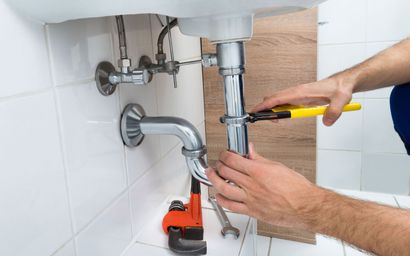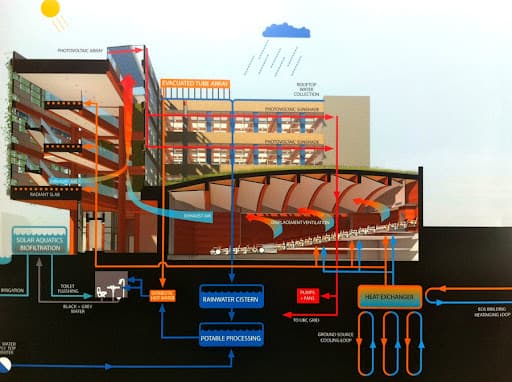Exploring Your Home's Plumbing System Anatomy
Exploring Your Home's Plumbing System Anatomy
Blog Article
What are your concepts about Exploring Your Homes Plumbing Anatomy?

Comprehending just how your home's pipes system functions is necessary for each homeowner. From supplying tidy water for alcohol consumption, food preparation, and showering to safely getting rid of wastewater, a properly maintained pipes system is vital for your household's wellness and convenience. In this thorough overview, we'll explore the intricate network that composes your home's plumbing and offer tips on upkeep, upgrades, and managing typical problems.
Introduction
Your home's pipes system is greater than simply a network of pipes; it's a complex system that guarantees you have accessibility to clean water and effective wastewater removal. Knowing its elements and how they work together can aid you stop expensive repair work and guarantee whatever runs smoothly.
Standard Parts of a Pipes System
Pipelines and Tubes
At the heart of your plumbing system are the pipes and tubing that lug water throughout your home. These can be made of different materials such as copper, PVC, or PEX, each with its advantages in terms of longevity and cost-effectiveness.
Components: Sinks, Toilets, Showers, and so on.
Components like sinks, toilets, showers, and bath tubs are where water is used in your house. Comprehending how these components connect to the pipes system aids in diagnosing problems and planning upgrades.
Valves and Shut-off Points
Valves control the flow of water in your pipes system. Shut-off valves are important throughout emergency situations or when you require to make repairs, permitting you to separate parts of the system without interrupting water circulation to the entire house.
Water System
Main Water Line
The major water line links your home to the municipal supply of water or a private well. It's where water enters your home and is dispersed to different fixtures.
Water Meter and Pressure Regulatory Authority
The water meter procedures your water usage, while a stress regulatory authority makes certain that water moves at a safe pressure throughout your home's plumbing system, preventing damage to pipelines and components.
Cold Water vs. Hot Water Lines
Understanding the difference in between cold water lines, which provide water directly from the main, and hot water lines, which bring warmed water from the water heater, aids in troubleshooting and preparing for upgrades.
Drainage System
Drain Pipes Piping and Traps
Drain pipes lug wastewater away from sinks, showers, and bathrooms to the sewage system or septic system. Traps stop sewer gases from entering your home and additionally trap particles that might cause obstructions.
Ventilation Pipelines
Ventilation pipelines enable air right into the drain system, preventing suction that could slow drain and create traps to vacant. Appropriate air flow is necessary for maintaining the stability of your plumbing system.
Value of Proper Water Drainage
Guaranteeing correct water drainage avoids back-ups and water damage. Regularly cleaning drains pipes and maintaining catches can prevent expensive fixings and extend the life of your plumbing system.
Water Furnace
Types of Hot Water Heater
Water heaters can be tankless or traditional tank-style. Tankless heating systems heat water on demand, while tanks store heated water for immediate use.
Exactly How Water Heaters Link to the Pipes System
Recognizing just how hot water heater attach to both the cold water supply and warm water circulation lines assists in identifying concerns like not enough warm water or leaks.
Maintenance Tips for Water Heaters
Consistently purging your water heater to remove debris, examining the temperature settings, and evaluating for leakages can prolong its lifespan and enhance power efficiency.
Common Pipes Issues
Leakages and Their Causes
Leaks can happen as a result of aging pipelines, loose installations, or high water pressure. Attending to leakages promptly prevents water damages and mold and mildew growth.
Blockages and Clogs
Clogs in drains and commodes are typically brought on by flushing non-flushable products or a buildup of grease and hair. Making use of drainpipe displays and bearing in mind what goes down your drains pipes can avoid obstructions.
Signs of Pipes Troubles to Expect
Low water pressure, sluggish drains pipes, foul odors, or unusually high water expenses are indicators of possible plumbing issues that must be attended to quickly.
Plumbing Maintenance Tips
Routine Evaluations and Checks
Schedule annual plumbing inspections to catch concerns early. Seek indications of leaks, corrosion, or mineral build-up in taps and showerheads.
Do It Yourself Upkeep Tasks
Basic jobs like cleaning faucet aerators, looking for toilet leaks using dye tablet computers, or insulating revealed pipelines in chilly environments can prevent major plumbing issues.
When to Call an Expert Plumbing
Know when a plumbing problem needs expert proficiency. Trying complex repairs without correct expertise can cause more damage and higher repair work costs.
Upgrading Your Plumbing System
Reasons for Upgrading
Upgrading to water-efficient fixtures or changing old pipelines can boost water top quality, minimize water expenses, and increase the worth of your home.
Modern Pipes Technologies and Their Advantages
Discover modern technologies like smart leak detectors, water-saving toilets, and energy-efficient water heaters that can conserve cash and minimize ecological effect.
Expense Considerations and ROI
Calculate the upfront costs versus long-term financial savings when taking into consideration plumbing upgrades. Several upgrades spend for themselves with decreased utility bills and less repair services.
Ecological Effect and Conservation
Water-Saving Components and Home Appliances
Mounting low-flow taps, showerheads, and bathrooms can considerably lower water use without compromising performance.
Tips for Lowering Water Use
Easy habits like dealing with leakages quickly, taking much shorter showers, and running full lots of laundry and recipes can conserve water and lower your energy bills.
Eco-Friendly Pipes Options
Consider sustainable pipes materials like bamboo for flooring, which is durable and eco-friendly, or recycled glass for counter tops.
Emergency situation Preparedness
Actions to Take Throughout a Plumbing Emergency
Know where your shut-off shutoffs lie and how to switch off the water supply in case of a burst pipeline or major leak.
Relevance of Having Emergency Get In Touches With Convenient
Keep get in touch with information for regional plumbers or emergency situation solutions readily available for quick response during a plumbing situation.
Do It Yourself Emergency Fixes (When Suitable).
Short-lived fixes like using duct tape to spot a dripping pipe or placing a bucket under a trickling faucet can lessen damage up until a specialist plumbing gets here.
Conclusion.
Recognizing the anatomy of your home's plumbing system encourages you to maintain it efficiently, conserving time and money on fixings. By following routine upkeep routines and staying educated concerning modern pipes modern technologies, you can ensure your plumbing system runs successfully for several years to come.
HOW YOUR PLUMBING SYSTEM WORKS
Which Pipes Do What?
Blue lines = fresh water supply entering the building
Red lines = hot water supply entering the building
Grey lines = pipes carrying waste away from the building and venting pipes carrying gases away from the building (through the roof)
YOUR MAIN PLUMBING SYSTEMS
There are two main plumbing systems that support your home s basic plumbing needs one that brings clean water into your home, and one that sends dirty water away from your home. Connected to the toilet, bath, shower, and other faucets in your home, these two systems keep your water flowing in the right directions.
ACCESSING FRESH WATER
Fresh and clean water is brought into your home through the main water supply line . Filtered through one pipe, this water is pressured to flow into the various fixtures in your home at any given time.
This water can be sourced from a well located on your property, a pond or river (mostly cottages), or, as in most cases, from the city s municipal water treatment centre. However, it is important to note that water that is untreated, such as the water siphoned from ponds or rivers, may not be safe to drink. Personal water supplies always need to be treated for hardness and contaminants before consumed.
MUNICIPAL WATER SUPPLIES
Improve taste and odour
Remove sediment
Eliminate hardness
Reduce chlorine
COLD WATER SUPPLY VS. HOT WATER SUPPLY
Cold water flows into your home or building through the service line, which then distributes hot or cold water to your fixtures. This line is most commonly run through a central column that runs floor to floor. Hot water runs in short and straight pipes as the longer the pipeline, the more heat that will be lost in the transfer. Having shorter pipes also allows residents to access hot water more quickly.
WASTE WATER SYSTEM
Your wastewater system is divided into two parts pipes that send wastewater away from your home and venting pipes that send sewer gas away from your home. Sewage water travels through pipes that flush the water and waste towards local sewers that are operated and managed by your city or town. Most sewer systems rely on gravity to move the wastewater to where it needs to go.
The further away from your toilet or sink, the larger wastewater pipes become. This allows for waste to be disposed of from various parts of your home or business at once without pipe blockages. The angle and flow of these pipes are also essential for keeping your waste pipes clear of build up.
https://harrisplumbing.ca/how-your-home-plumbing-system-works/

HOW YOUR PLUMBING SYSTEM WORKS
Which Pipes Do What?
YOUR MAIN PLUMBING SYSTEMS
There are two main plumbing systems that support your home s basic plumbing needs one that brings clean water into your home, and one that sends dirty water away from your home. Connected to the toilet, bath, shower, and other faucets in your home, these two systems keep your water flowing in the right directions.
ACCESSING FRESH WATER
Fresh and clean water is brought into your home through the main water supply line . Filtered through one pipe, this water is pressured to flow into the various fixtures in your home at any given time.
This water can be sourced from a well located on your property, a pond or river (mostly cottages), or, as in most cases, from the city s municipal water treatment centre. However, it is important to note that water that is untreated, such as the water siphoned from ponds or rivers, may not be safe to drink. Personal water supplies always need to be treated for hardness and contaminants before consumed.
MUNICIPAL WATER SUPPLIES
COLD WATER SUPPLY VS. HOT WATER SUPPLY
Cold water flows into your home or building through the service line, which then distributes hot or cold water to your fixtures. This line is most commonly run through a central column that runs floor to floor. Hot water runs in short and straight pipes as the longer the pipeline, the more heat that will be lost in the transfer. Having shorter pipes also allows residents to access hot water more quickly.
WASTE WATER SYSTEM
Your wastewater system is divided into two parts pipes that send wastewater away from your home and venting pipes that send sewer gas away from your home. Sewage water travels through pipes that flush the water and waste towards local sewers that are operated and managed by your city or town. Most sewer systems rely on gravity to move the wastewater to where it needs to go.
The further away from your toilet or sink, the larger wastewater pipes become. This allows for waste to be disposed of from various parts of your home or business at once without pipe blockages. The angle and flow of these pipes are also essential for keeping your waste pipes clear of build up.
https://harrisplumbing.ca/how-your-home-plumbing-system-works/
Do you really like more info about The Inner Workings of Your Home's Plumbing? Give a review directly below. We will be pleased to find out your feelings about this piece. In hopes to see you back again before long. Those who enjoyed reading our post please do not forget to pass it around. I praise you for being here. Revisit us soon.
View More Report this page